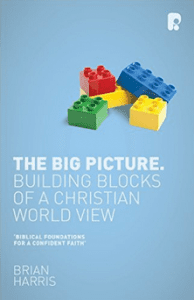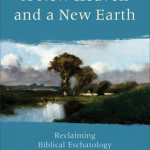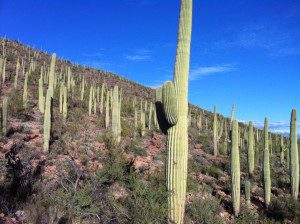 The next chapter of Iain Provan’s book Seriously Dangerous Religion looks at the nature of humanity in the Old Testament and particularly at the relationship of male and female comprising humanity. His focus is on Genesis 1-2, but expands to consider the entire OT as well. Genesis 1 and 2 are concerned with proper functions and relationships in God’s good creation, not with a scientific, historical report of the sequence of creation. The different orders of creation present in Genesis 1 and 2 provide a first clue to this purpose of the texts , but there are others as well. Central to this is the proper role and function of human kind in God’s creation.
The next chapter of Iain Provan’s book Seriously Dangerous Religion looks at the nature of humanity in the Old Testament and particularly at the relationship of male and female comprising humanity. His focus is on Genesis 1-2, but expands to consider the entire OT as well. Genesis 1 and 2 are concerned with proper functions and relationships in God’s good creation, not with a scientific, historical report of the sequence of creation. The different orders of creation present in Genesis 1 and 2 provide a first clue to this purpose of the texts , but there are others as well. Central to this is the proper role and function of human kind in God’s creation.
The first important point is that the biblical view of humanity stands in stark contrast to the surrounding ancient Near Eastern cultures. The Mesopotamian cultures portrayed humanity as created to work for the gods, as slave labor to provide their needs and free them from drudgery. We dug into a lot of this in the recent series on Richard Middleton’s book The Liberating Image, particularly the post Humans Created to Serve the gods?, so I won’t repeat it here.
The Necessary Gardener. In contrast to the ancient Mesopotamian view, humans represent the high point of creation in the OT view.
One of the ways in which Genesis indicates this is precisely to move them out of the role of being caretakers of the divine image in a temple and into the role of being divine images in a temple themselves. (p. 80)
Clearly this starts in Genesis 1 and 2, but Psalm 8 may summarize the biblical view the best.
You have made them a little lower than the angels
and crowned them with glory and honor.
You made them rulers over the works of your hands;
you put everything under their feet:
all flocks and herds,
and the animals of the wild,
the birds in the sky,
and the fish in the sea,
all that swim the paths of the seas.
Provan sees the divine image as a property of humanity as a whole – all human beings together are called to rule creation. This is a democratized and community based function. This is reflected in Psalm 8 where the psalmist “recognizes the extraordinary nature of the situation, and he praises God for it, for each and every has been raised to the status of divinity and royalty from the status of only a slave.” (p. 84)
The significance of humans created in the image of God in Genesis 1 is given additional emphasis in Genesis 2 where “creation does not function, biblically, without the human beings who are placed in it to rule over it.”
Genesis 1 describes the world as a place designed by God in which life can flourish; Genesis 2 describes it as a place whose human population is essential to its flourishing. All things wait in Genesis 2, therefore, for a human being (’adam) to work the ground (’adamah). All things wait for the necessary gardener. (p. 86)
 The Initial Earthling Was Split. The initial human created in Genesis 2 was neither male or female, it was an earth-being. If science fiction had not appropriated the term, Provan would prefer to translate ’adam in most of Genesis 2 as “earthling,” a human created from the earth. Sexual differentiation comes about in the story because it is not good for the human to be alone. “It seems that human vocation in the cosmos can be fulfilled only in community, not individually.” (p. 87) The human names the creatures God creates, joining with God in creation by naming, but none is a suitable partner.
The Initial Earthling Was Split. The initial human created in Genesis 2 was neither male or female, it was an earth-being. If science fiction had not appropriated the term, Provan would prefer to translate ’adam in most of Genesis 2 as “earthling,” a human created from the earth. Sexual differentiation comes about in the story because it is not good for the human to be alone. “It seems that human vocation in the cosmos can be fulfilled only in community, not individually.” (p. 87) The human names the creatures God creates, joining with God in creation by naming, but none is a suitable partner.
The special place of human beings in the cosmos is in this way underscored. Only another image bearer will suffice as a partner for ’adam…. And so the earthling is divided and becomes male and female. … God closes up the gap in the earthling’s body through which the material has been extracted that becomes the woman. The body is returned to an attractive state, now male. Two human beings now exist where previously there was one, and they exist in the closest possible relationship. She is, as the male affirms, “bone of my bones and flesh of my flesh” (2:23). … In Genesis 2 the language has an even more intimate significance, for the male and the female are destined to become again “one flesh” in marriage (Genesis 2:24)—to “return,” as it were, to their original condition as the inhabitants of one body. The intimacy of this relationship is also indicated in the similar names given to the male and the female in Genesis 2:23. One is “man” (Heb. ’ish) and the other is “woman” (Heb. ’ishah). … Human beings, Genesis tells us, are intrinsically both male and female—that is the communal reality thatis “good.” Only in community can humanity fulfill the human vocation.
The exalted position that women hold in the biblical story is by this point very clear. It is precisely the same high and exalted position that is occupied by men. Both men and women are made in the very image of God, and both are placed in the garden of God jointly to rule over it. They do this together as ’adam, “humankind.” They do it separately as ’ish and ’ishah—“man” and “woman.” These latter names themselves indicate commonality as much as separation, however, and cooperation as much as individual action. (p. 89-90)
 Male and female were created complementary without hierarchy. Now, Provan’s reading runs counter to that suggested by many in our church, with female the submissive helper for the male created first and placed in authority. But in his reading woman was not created to be a helper for man, rather the human was split into man and woman. Marriage is a rejoining of the human. The woman when confronted by the snake in the garden was not beholden to instruction from the man to know God’s command – she, as part of the original human, had heard it for herself. There is no authority or hierarchy until Genesis 3:16 – and here it is a reflection of fallen humanity, not a God ordained “good.” The hierarchical, patriarchal structure of much of OT society follows the entry of moral evil into the world. Perhaps, hierarchy was permitted because their hearts were hard, much as Jesus taught concerning divorce “Moses permitted you to divorce your wives because your hearts were hard. But it was not this way from the beginning.” (Mt 19:8) Provan sums up:
Male and female were created complementary without hierarchy. Now, Provan’s reading runs counter to that suggested by many in our church, with female the submissive helper for the male created first and placed in authority. But in his reading woman was not created to be a helper for man, rather the human was split into man and woman. Marriage is a rejoining of the human. The woman when confronted by the snake in the garden was not beholden to instruction from the man to know God’s command – she, as part of the original human, had heard it for herself. There is no authority or hierarchy until Genesis 3:16 – and here it is a reflection of fallen humanity, not a God ordained “good.” The hierarchical, patriarchal structure of much of OT society follows the entry of moral evil into the world. Perhaps, hierarchy was permitted because their hearts were hard, much as Jesus taught concerning divorce “Moses permitted you to divorce your wives because your hearts were hard. But it was not this way from the beginning.” (Mt 19:8) Provan sums up:
No reading of Genesis 2 about the creation of male and female can be accepted as correct, I suggest, that does not take seriously the claim of Genesis 1 that ’adam, male and female, is created in the image of God and given joint dominion over creation. (p. 92)
Human Society. The first two chapters of Genesis, then, tell us much about the ideal nature of human society in God’s creation. Humans, as God’s image, are to rule over and look after creation on God’s behalf … all humans, not just a king, not just men. Marriage is an important part of God’s creation, a relationship that should take precedence over all others. Beyond this, there is a humanistic emphasis, no human sacrifice, no murder, and even slaves have rights. The ideal isn’t reached in the OT laws, but there is a theme. There is also a democratic, egalitarian emphasis. A king was granted, but not God’s preference. God alone should be the king. There are human leaders, but this is a response to God’s calling for a task, not a divine right of one person over others. The leader is merely one among “brothers.” All humans, male and female, are called as the divine image to rule in the temple-cosmos.
Does Provan’s reading of a genderless human split into male and female make sense?
What are the strengths or weakness of this reading?
What does Genesis 1 and 2 tell us about the structure of God’s good purpose for human society?
If you wish to contact me directly you may do so at rjs4mail [at] att.net.
If interested you can subscribe to a full text feed of my posts at Musings on Science and Theology.















